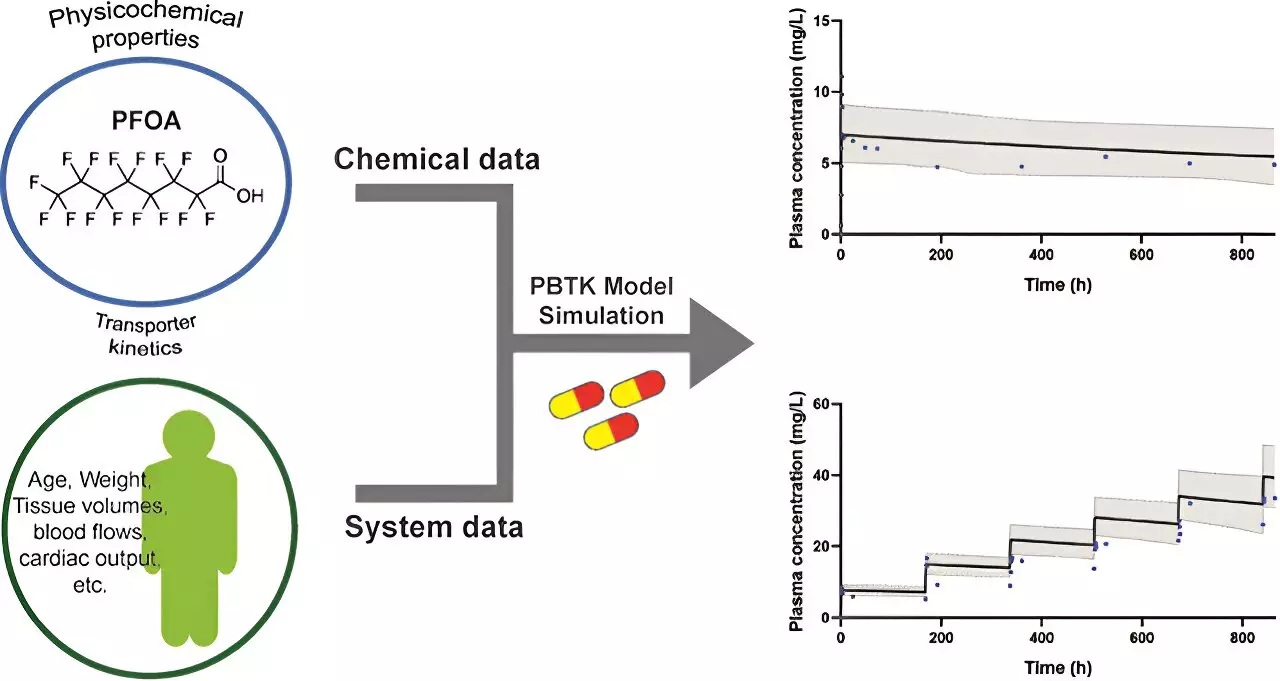Perfluorooctanoic acid (PFOA), an environmental contaminant found in various everyday products, has been linked to numerous health concerns including liver and kidney cancer, thyroid issues, developmental effects on the immune and reproductive systems, and fetal development. In Singapore, PFOA has been detected in 99% of blood samples from local cohorts, affecting fertility in women. However, our understanding of critical levels of PFOA exposure and how the human body eliminates it remains limited.
Breakthrough in PFOA Research
Led by Dr. James Chan and his team at A*STAR’s Singapore Institute of Food and Biotechnology Innovation (SIFBI) and the A*STAR Skin Research Labs (A*SRL), significant progress has been made in unraveling how the human body processes and eliminates PFOA. Through the utilization of a virtual model that replicates the biological traits of the human body’s chemical processing mechanisms, the research team shed light on the biology of PFOA and its high resistance to biological degradation in humans.
One key finding of the study is that PFOA strongly binds to blood proteins, acting as a magnet and limiting its filtration by the kidneys. As a result, the elimination of PFOA from the body is significantly slowed down. This prolonged retention of PFOA in the body contributes to the potential health risks associated with its exposure.
Similarities to Essential Nutrients
Another intriguing discovery is that PFOA closely resembles the fatty acids that our body requires. As a result, the kidneys mistakenly reabsorb PFOA from the urine, mistaking it for an essential nutrient. This further hampers the body’s ability to eliminate PFOA efficiently.
Furthermore, PFOA utilizes the same pathway as essential fatty acids to enter our tissues. This allows it to be widely distributed throughout all organs of the body, increasing the potential for harm. The ability of PFOA to infiltrate various bodily organs further highlights the urgency to develop safer alternatives to this chemical.
Implications for Safer Chemical Design
The insights gained from the research on PFOA’s persistence in the body have significant implications for the development of safer replacement chemicals used in industries and consumer products. By understanding the mechanisms through which PFOA persists in the body, it becomes possible to design next-generation chemicals with reduced health risks. This research is a crucial step towards improving the safety standards of chemicals used in various applications.
Expanding the Research
The model developed by Dr. James Chan’s team is currently being utilized to investigate the sources of PFOA exposure within the Singapore population. Furthermore, there are plans to expand the application of the model to study other Per- and Polyfluoroalkyl Substances (PFAS), of which PFOA is only one of over 14,000 such chemicals. This broader investigation into PFAS will aid regulatory bodies in measuring the amount of these substances present in consumer products.
Collaboration for Better Population Health
Dr. James Chan emphasizes the importance of collaboration with the broader scientific community to comprehend the potential harm posed by PFAS. As there are countless other similar chemicals with unknown consequences that we are consistently exposed to, it is crucial to harness the power of research and scientific expertise to protect population health effectively.
The breakthrough made by Dr. James Chan and his team in uncovering how PFOA is processed and persists in the human body provides valuable insights into the health risks associated with this environmental contaminant. By understanding the mechanisms behind PFOA’s resistance to biological degradation and its ability to accumulate throughout the body, scientists can work towards the development of safer chemicals and improve the safety standards of industrial and consumer products. The model developed and the knowledge gained from this research will help regulatory bodies measure the impact of PFOA and explore safety limits in various products. Collaboration within the scientific community is vital to continue unraveling the potential harm posed by PFAS and safeguarding population health.


Leave a Reply